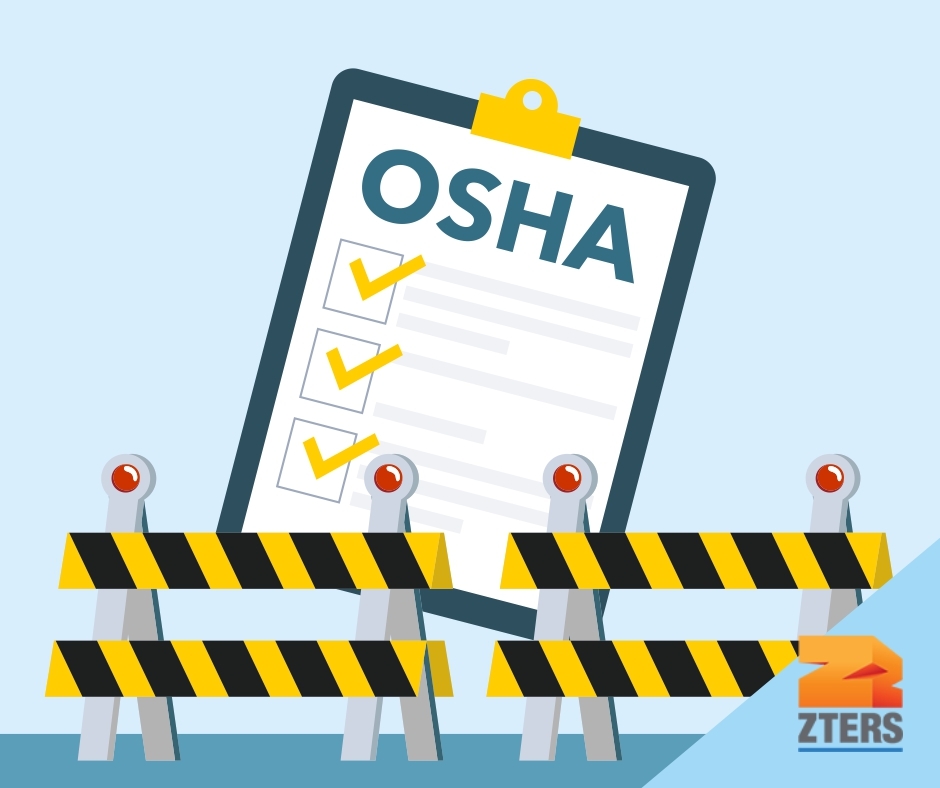Workplace safety matters in every job setting — especially in higher risk sectors like construction. The Occupational Safety and Health Administration (OSHA) plays an essential role in setting and enforcing safety standards to protect workers from hazards.
Proper implementation of barricades serves to prevent accidents, injuries, and unauthorized access to hazardous areas. It’s important that employers understand and comply with OSHA barricade requirements in order to maintain a safe and secure worksite as well as avoid any penalties.
ZTERS works closely with construction companies nationwide so we’re well-versed in OSHA requirements. Renting temporary fencing from ZTERS can help streamline your project and ensure that you adhere to these barricade requirements. Here’s what you need to know.
What are barricades?
Barricades are physical barriers or structures that block off or control access to a specific area. They can be temporary or permanent and are typically made of materials such as plastic, metal, or even wood. Barricades serve multiple purposes, including:
- Safety: Preventing access to hazardous areas
- Traffic Control: Guiding pedestrian or vehicular traffic away from dangerous zones
- Security: Restricting unauthorized access to restricted areas
Barricades and other forms of fencing can also be effective in deterring construction site theft, making barricade fencing not only a legal requirement but a smart choice as well.
Types of OSHA Barricades
OSHA requirements call out two primary types of barricades: rail barricades and traffic control devices.
Rail barricades, whether portable or fixed, consist of one to three marked rails. They serve to guide and control vehicles/pedestrians by closing off, restricting, or outlining sections of the right-of-way.
Rail barricade markings must be orange and white, as well as retro-reflective — meaning that light reflects back toward its source. These markings need to be positioned at a 45-degree angle relative to the flow of traffic. Rail barricades are also classified into several grades:
- Type 1 and 2 rail barricades must be at least two feet tall
- Type 3 barricades must be at least four feet tall
Need Temporary Fencing?
Speak with an account manager for a free quote.
In addition to rail barricades, OSHA also imposes requirements related to traffic control devices. These devices are “channelizing devices” designed to alert drivers to conditions resulting from nearby work activities. Examples of traffic control devices include:
- Cones
- Tubular markers
- Drums
- Barricades
- Vertical panels
- Longitudinal channelizing devices
Key OSHA Barricade Requirements
You can view the full OSHA barricade requirements directly on the official OSHA website. Here are some key highlights. Keep in mind that every job is different and therefore requirements may vary.

- Identification and Marking: Barricades should be clearly identifiable and appropriately marked to warn individuals of potential hazards or restricted access. This includes high-visibility colors, reflective materials, and/or warning signs indicating the hazard.
- Stability and Durability: Barricades must be stable and durable enough to withstand weather conditions and potential impact. They should not easily collapse or be moved by external forces.
- Height and Visibility: Barricades should be tall enough to deter unauthorized access and visible from a distance to alert individuals to potential dangers. This is especially important in areas where there is heavy machinery or equipment operating.
- Accessibility: While barricades are meant to restrict access, they should also allow for easy evacuation in case of emergencies. There should be designated entry and exit points or alternative pathways for people to escape if needed.
- Maintenance and Inspections: Employers are responsible for regularly inspecting and maintaining barricades to ensure they remain effective and in compliance with OSHA standards. Any damage should be repaired or replaced as soon as possible.
Why It’s Important to Comply With OSHA Requirements
Complying with OSHA barricade requirements isn’t just a legal obligation; it’s also a moral obligation. We should all aim to make construction sites and surrounding areas as safe as possible for workers and others nearby. Failure to adhere to these barricade standards can result in serious consequences, including fines, penalties, and injury.
Get in touch with ZTERS about our temporary fence rentals and let our friendly fencing specialists help you remain compliant with OSHA standards.

